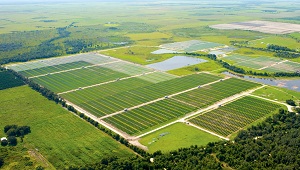Southeastern U.S. to get first giant, 400 MW, PV project
 The Southwestern U.S. has dominated the world of utility-scale solar projects over the past few years, with news of deals being signed for solar-power plants as large as 1 gigawatt or more.
The Southwestern U.S. has dominated the world of utility-scale solar projects over the past few years, with news of deals being signed for solar-power plants as large as 1 gigawatt or more.
But now the Southeastern U.S. looks like it will soon be home to one of the world’s largest solar projects, a 400-megawatt photovoltaic farm being built by National Solar Power, LLC.
The only question now is: Where?
The company has named a total of seven sites in three states, Florida, Georgia and North Carolina, as potential hosts for the ambitious project.
“We’re looking at sites that will meet certain criteria, like having enough undeveloped land where we could put this farm in,” said Ryan Banfill a spokesperson for National Solar. Other criteria include appropriate economic development strategies, community support and a qualified work force, he said.
“Over the next month, we will continue our due diligence and make a final decision about where this revolutionary venture will make its permanent home. Every one of the communities on our finalist list is an attractive location for this project,” James Scrivener, CEO of National Solar Power, said in a press release.
The communities or counties being considered are Gadsden, Hardee, Osceola and Suwannee counties of Florida; Sumter and Tatnall counties of Georgia; and Guilford County of North Carolina, according to a press release.
Communities not selected for this project are likely candidates for future projects, according to Banfill.
National Solar Power has about 3,000 megawatts of solar power supply agreements under contract already. However, Banfill could not disclose which utilities or companies it had signed contracts with.
“The demand is there; the question is getting the supply to the demand,” he said. “Ideally, we’d find 4,000 acres contiguously. That would be the ideal.”
However, because the Southeast doesn’t have the same relatively unused land resources as the Southwest, the company is looking at a different approach.
“It’s the world’s largest solar farm,” he said. “It’ll be made of 20 different fields.”
The plan would be realized in phases, with the first phase coming online six months after construction starts, Banfill said. In all, it’s a five-year build out that’s projected to cost roughly $1.5 billion.
To support the project, the company is looking at its options.
“It will consider all the development strategies and tax incentives that are on the table,” Banfill said.
That could include federal, state and local incentives, and financial partners.
“Hansel Phelps is the only partner that has been named so far,” he said. “There will be significant partners in the financial world and in the utility world.”
Image courtesy of Florida Power & Light.



